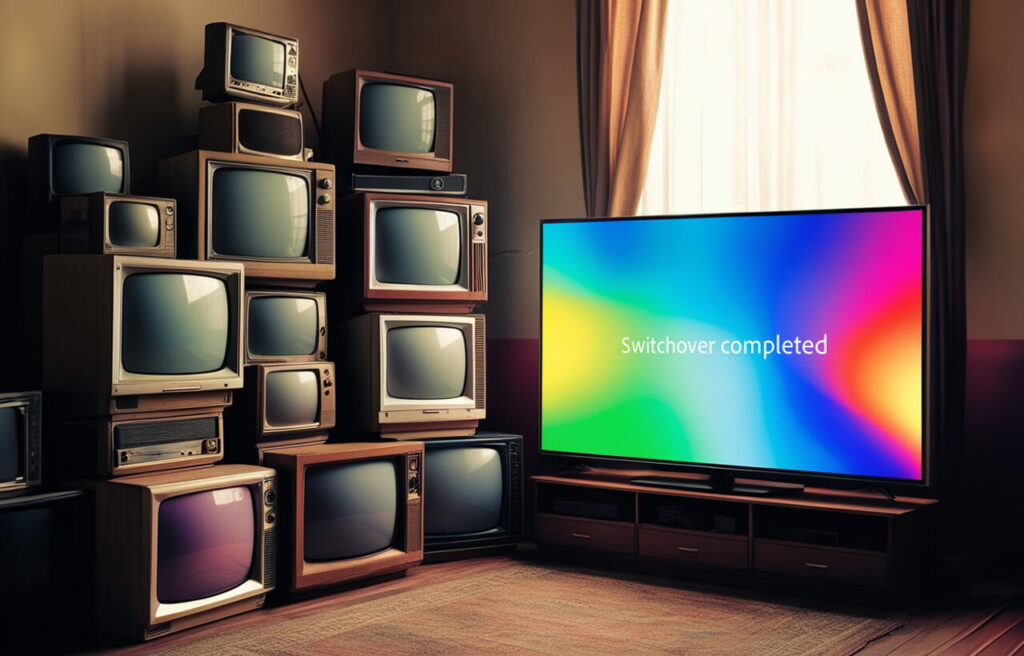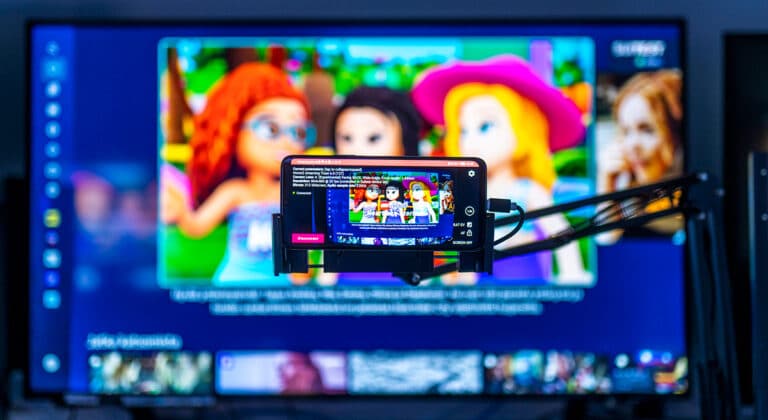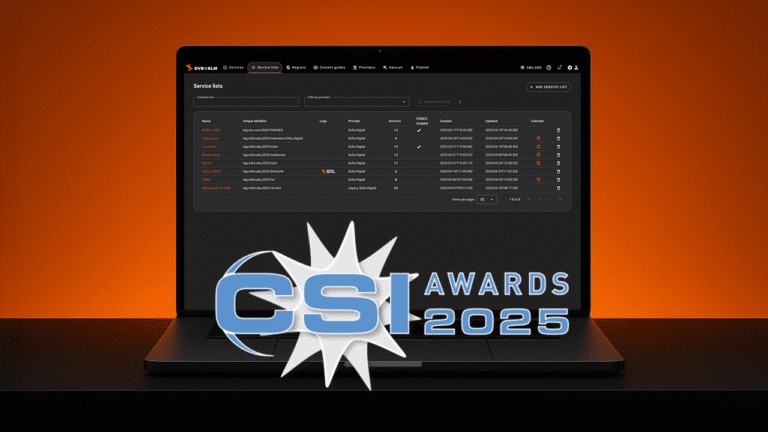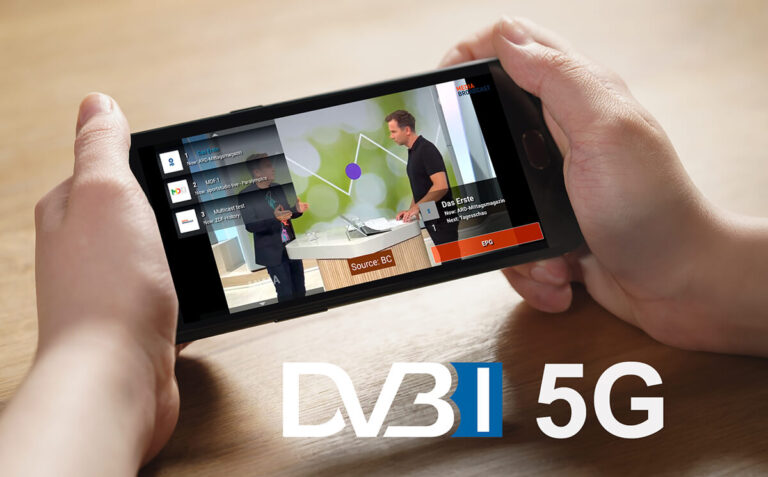
Indonesia’s transition from analogue to digital terrestrial TV (DTT), has marked a significant shift in the nation’s broadcasting landscape. Despite delays and challenges, the Analogue Switch-Off (ASO) was successfully completed, leading to substantial changes in viewer behaviour and advertising revenue. While the transition has been completed, broadcasters face new competition from digital platforms, and only 80% of viewers have returned post-ASO. The future of Indonesian TV hinges on leveraging digital capabilities that can be competitive compared to online media services and social media platforms. The DTT platform of Indonesia is based on DVB standards which allows value-adding, personalized TV services, advertising, and enhanced viewing experiences, positioning digital TV as a competitive platform amidst evolving media consumption trends.
Indonesia plays a remarkable role in the Southeast Asian Free-to-Air (FTA) TV market. It’s a country with a land area of around 1.9 million km2 and an ocean area of 6.6 million km2 and has more than 17,000 islands. With a population of more than 275 million including more than 73 million households, Indonesia, one of the most prominent developing countries, is an attractive market for free and paid television. TV market for terrestrial FTA is over 60% and satellite pay TV has about 10% market share that also complements some must-carry FTA services. The rest is a combination of cable TV and OTT/IPTV.
In 2012, the Ministry of Communication and Information Technology (KOMINFO) laid a roadmap for the digital switchover. Indonesia eventually chose DVB standards for the ASO, meaning the terrestrial signal is delivered using DVB-T2. This is similar to surrounding countries like Malaysia and Thailand. The plan included the establishment of a digital multiplexing infrastructure, the creation of regulations to govern the transition, and public awareness campaigns to educate citizens about the benefits and the process of switching to digital TV.
10 years later, in 2022, after several trials mainly done in the Jakarta area, Indonesia gradually began migrating from analogue to digital terrestrial TV in practice, starting from the big cities on the island of Java and continuing to other regions. This migration was already behind the initial target, as it should have been carried out before 2022 but due to unpreparedness caused by many factors, including the lack of availability of affordable DVB-T2 receivers and the challenging landscape which is very wide and separated by islands.
Currently, in 2024, TV channels are facing a big challenge to maintain advertising revenue when other alternatives for watching the content are increasingly being used. OTT, social media, and other digital platforms are the main competitors in advertisement sales. Before the ASO around 5-10 years ago, FTA became the main target for advertisers to place their commercials to reach the wider community. But in the last 2-3 years, social media and other digital platforms have taken over the advertising market.
Summarized from various sources, when ASO was executed, local TV channels lost up to 60% of viewers depending on the region. The low numbers may have come partly because the TV audience measurement systems were not well-prepared for the digital era. However, the biggest factor was the unpreparedness of viewers to have a digital TV receiver at home, and other alternatives to watch FTA via streaming/OTT media offered easier ways to access the content.
Within 4 months after the ASO was implemented, viewers have returned but still covered only around 80% of the population. The age range of viewers also influences the percentage of viewers returning after ASO. Viewers in the 20-30 years age range prefer to view content via gadgets, even the FTA channels are viewed via streaming media. In the current situation, FTA viewers via conventional TV are still dominated by the age range of 40 and above. The damage to the TV advertising revenue has already changed the Indonesian advertisement market and advertisers are still waiting and seeing how efficiently place campaigns on FTA.
In Indonesia there are 5 big groups of broadcasters including the national TV operator TVRI. The commercial players are MNC group with their most popular TV channel RCTI, EMTEK group running the popular channels SCTV and INDOSIAR, Trans group with Trans7 and Trans TV channels and finally the VIVA group. These biggest broadcasters also operate their own DVB-T2 multiplexes under the licenses given by KOMINFO, the Indonesian regulatory authority.
These biggest media companies also have OTT services, Pay TV platform, and online media. Advertising revenue has not fallen much as a total but has spread to other content media besides FTA broadcasting.
Changes in viewing patterns, choice of media for viewing and social media are challenges for broadcasters, content providers, and platform application solution providers to maintain the viability of free-to-air channels. One possible improvement for broadcasting advertising is to offer more targeted, addressable, and personalized advertising experiences also in the FTA platform. This will allow it to be more competitive with the Internet advertising models.
After the completion of ASO, there are 678 terrestrial digital TV stations in total, including both national and regional broadcasts. This number is very large, and competition in creating content to attract audiences and advertisers is very hard.
However, completing the ASO migration was just the first step for Indonesian TV digitalization. There are still many things that must be done after the migration. Digital TV is not just a technical issue but provides means to provide improved overall services utilizing DVB standards such as subtitles, alternative audio tracks, next-generation audio, 4K, better EPG, and most importantly the HbbTV standard for addressable TV services and personalized advertisements. This will be a big opportunity from a business perspective to digital TV in Indonesia. The characteristics of Indonesian TV fit well with HbbTV because of the strong position of Free-to-Air TV services, which is similar to Spain, Italy and Germany where HbbTV is a regular and popular service giving new revenue sources to FTA broadcasters like Mediaset, Atresmesia, RTM group and ProSiebenSat1.
What makes Indonesian Digital terrestrial TV (DTT) different from other South-East Asian countries?
Digital terrestrial TV (DTT) can be more successful in Indonesia than in neighboring countries due to several key reasons:
- Large Population and Geographic Diversity: Indonesia’s vast and dispersed population, spread across thousands of islands, makes DTT an effective solution for reaching remote and rural areas. DTT can offer nationwide coverage without relying heavily on satellite or cable, which may be less feasible in Indonesia’s varied terrain.
- Strong Free-to-Air (FTA) TV Culture: Indonesia has a robust FTA TV market with a long-standing tradition of high viewership. The popularity of FTA channels in Indonesia provides a solid foundation for the adoption of DTT, as it enhances the existing FTA services with better quality and additional features like high-definition content, electronic program guides and interactive services.
- Government Support and Regulatory Framework: The Indonesian government, through KOMINFO, has shown a strong commitment to the digital transition by establishing a clear roadmap, investing in infrastructure and implementing policies that support DTT adoption. The government has also encouraged broadcasters to adopt DVB-T2 and facilitated the distribution of digital TV receivers to households.
- Potential for Addressable Advertising: Indonesia’s large advertising market, coupled with the potential for targeted, addressable advertising through digital TV, presents a significant opportunity for broadcasters to generate revenue. The integration of technologies like HbbTV (Hybrid Broadcast Broadband TV) enables personalized advertising, making DTT more attractive to advertisers and more competitive against digital platforms.
- Localized Content and Regional Broadcasters: Indonesia has a diverse cultural landscape with many regional languages and preferences. DTT allows for the proliferation of regional channels catering to local audiences, which can drive higher engagement and loyalty compared to Malaysia and Thailand, where content is less localized.
- Less Saturation of Alternative Platforms: While OTT and streaming services are growing in Indonesia, the penetration and dominance of these platforms may not be as deep as in Malaysia and Thailand. This leaves more room for DTT to establish itself as the primary mode of content delivery, especially in areas with limited internet access.
These six factors make the DTT platform in Indonesia a unique opportunity for success, capitalizing on the country’s large population, FTA TV culture, government support, and the potential for advanced digital services and localized content.





